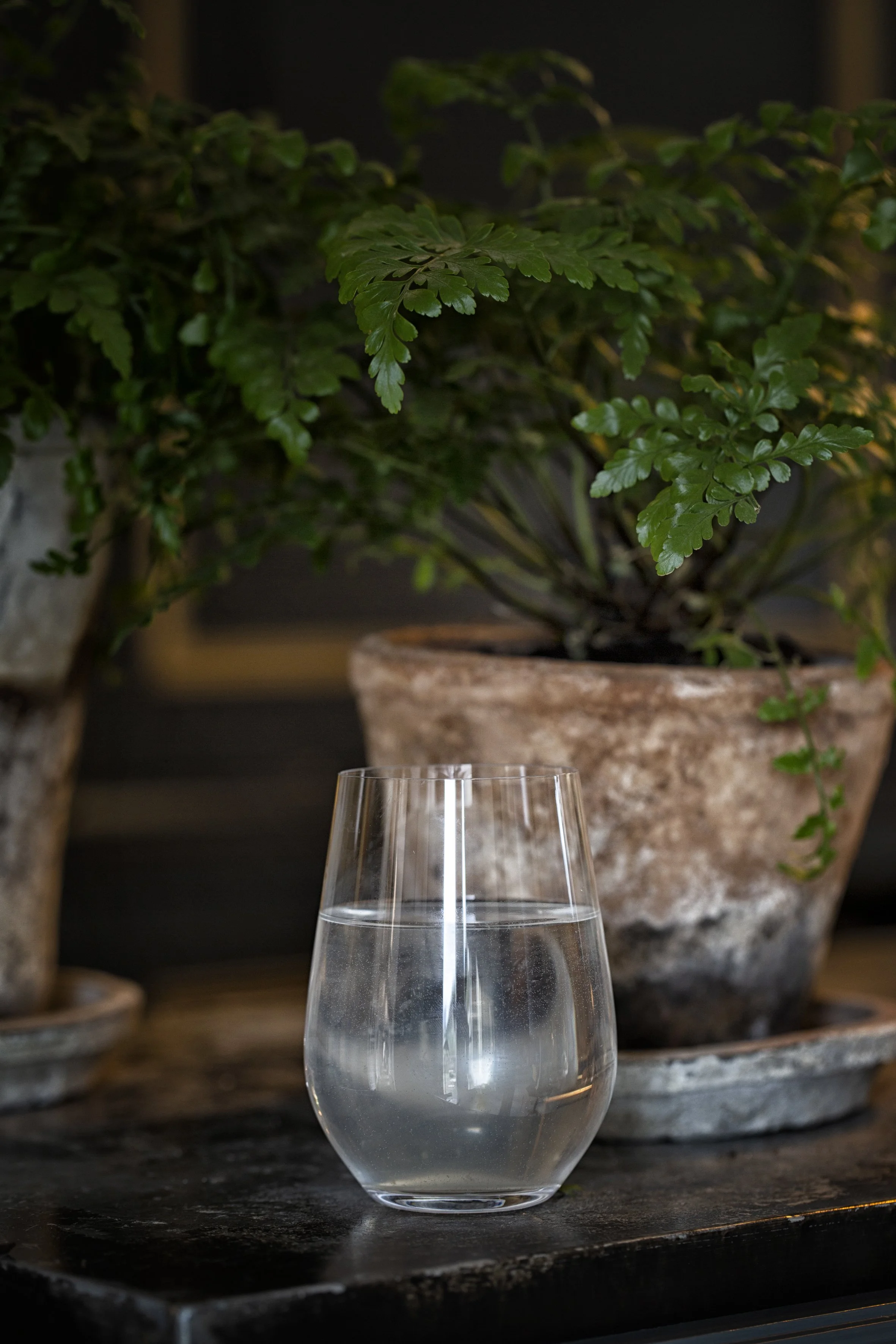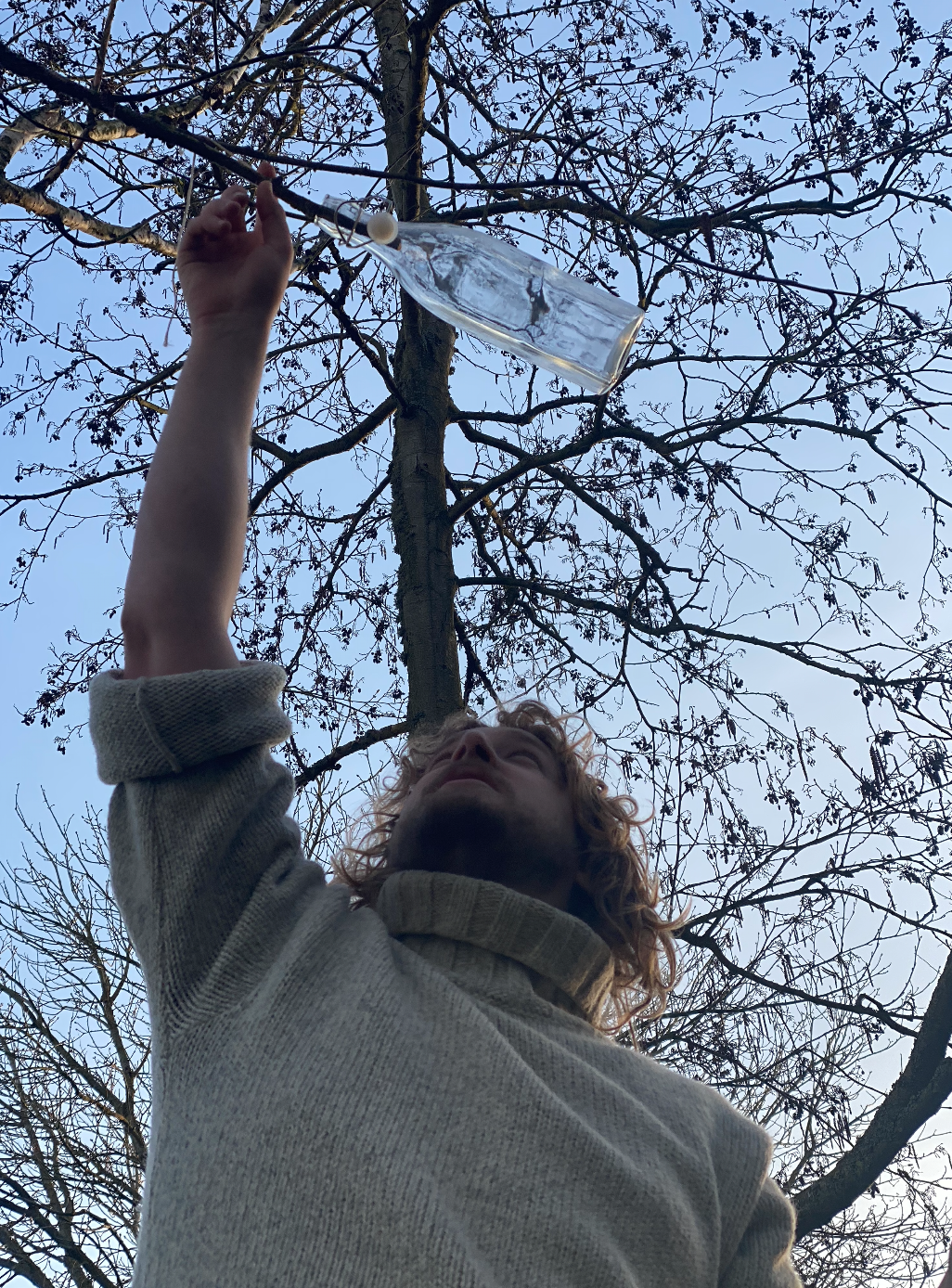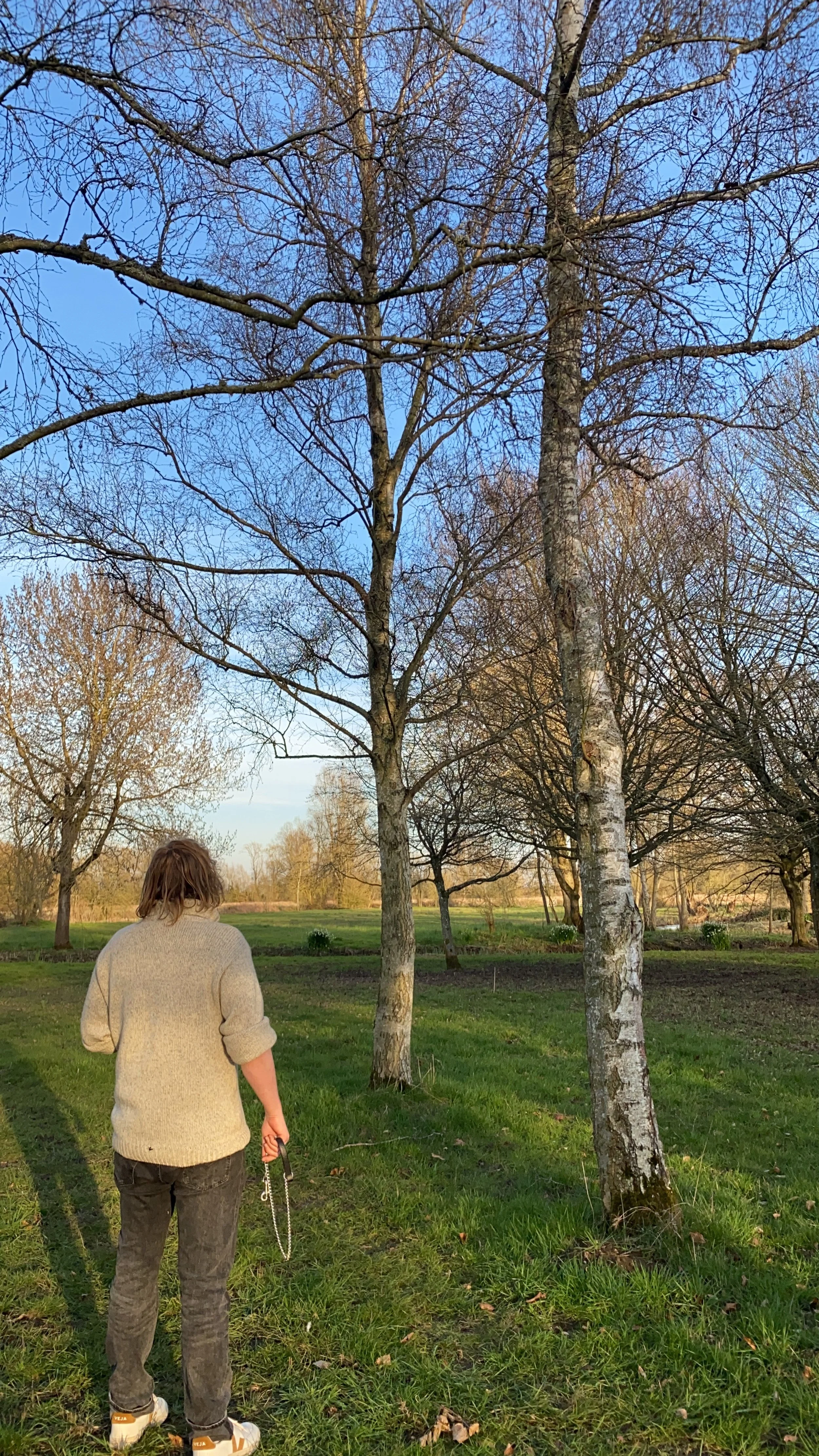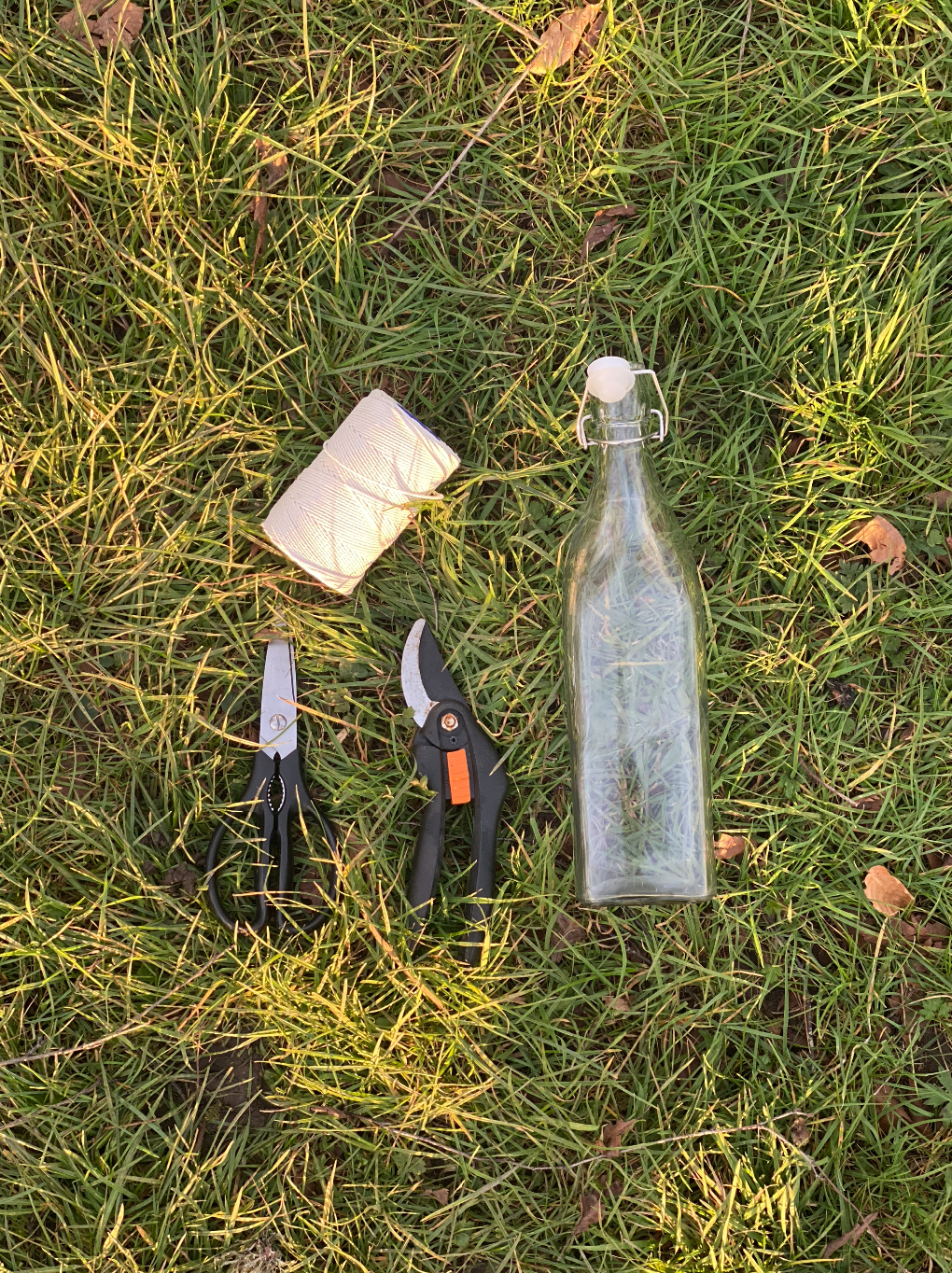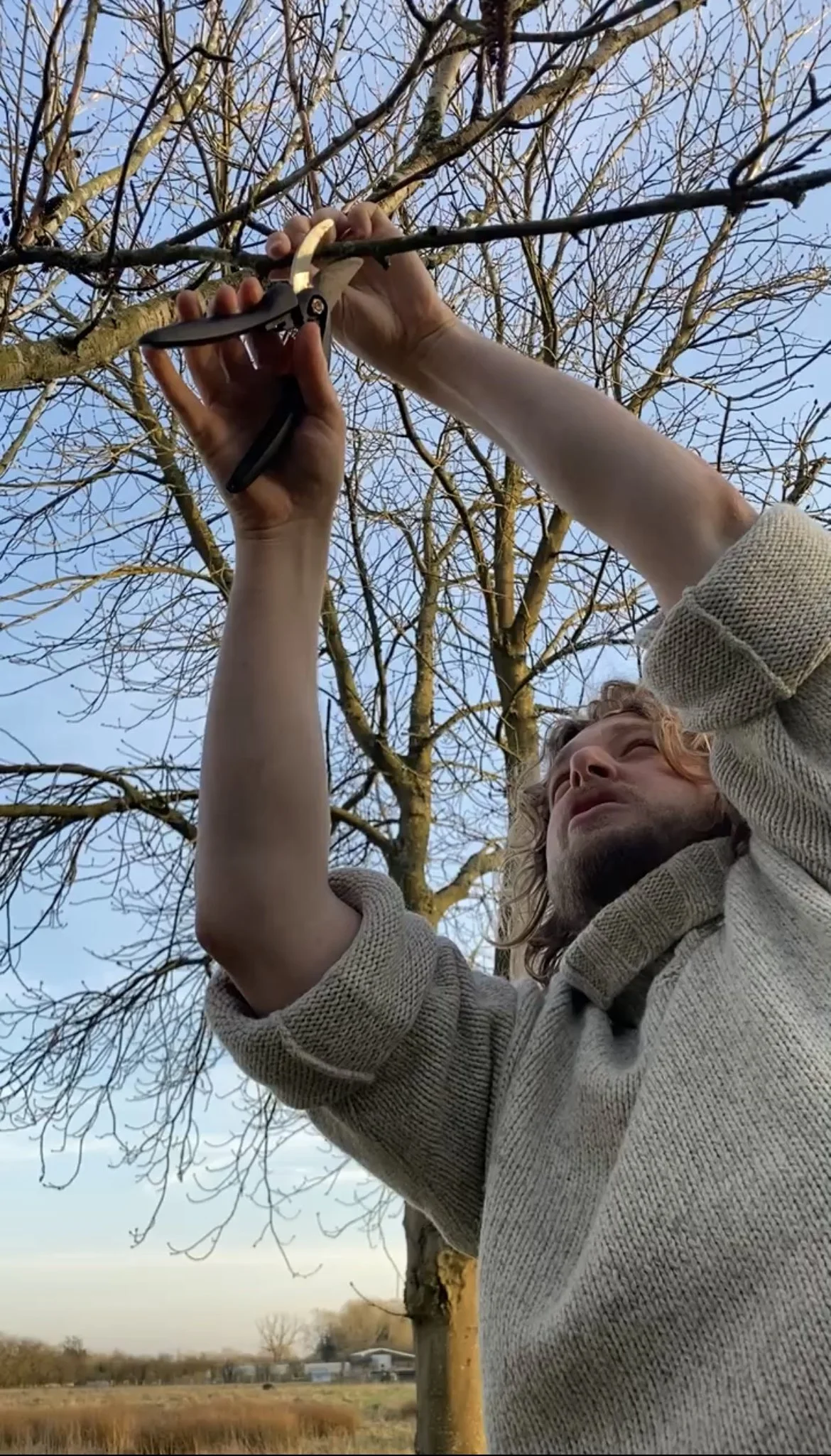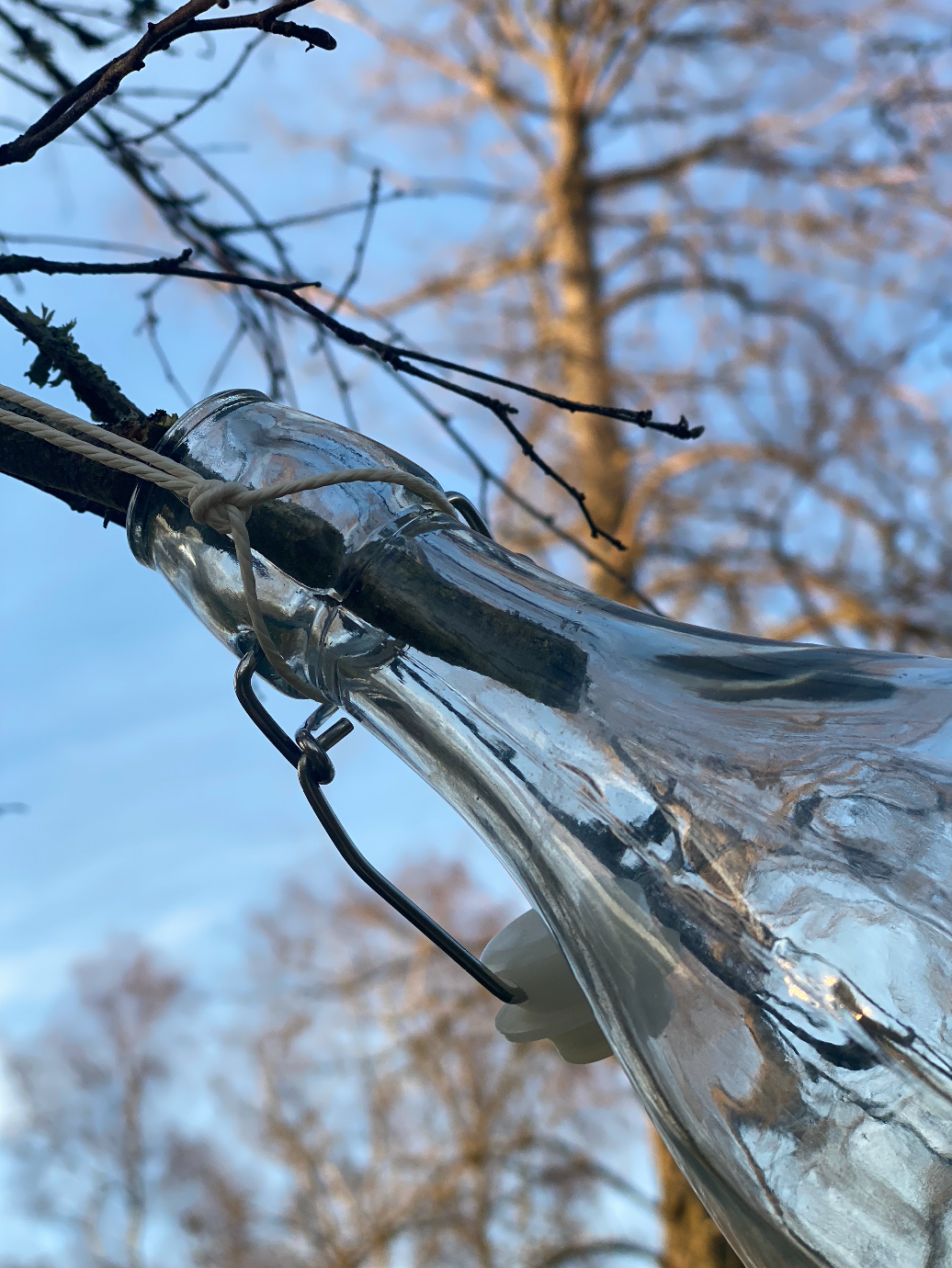Birch Sap: The Ingredient Edit
by CARYN HIBBERT & Chef Director, Charlie Hibbert
A Sign of the Seasons
Our trees and shrubs survive winter by remaining dormant. In doing so they avoid holding on to too much water. Cold and frosty nights would allow the water to freeze and turn to crystals in their cells. A lethal outcome, as the frozen water would expand the cells, causing them to burst.
As the days become longer in springtime, sunshine warms the trees and the stored starch in their woody stems breaks down to form sucrose.
Water is drawn from the earth by simple osmosis; it literally runs up through their veins and this rising sap can be collected. Maple syrup is an example of this. Here at Thyme, we draw birch sap. Very slightly sweet, it can only be collected on a few early spring days.
If you listen carefully, the water rising up the vascular structures of the tree trunk can be heard like a river in the xylem tubes underneath the bark, creaking and popping as it brings new life from the roots to the new leaves. Nature never fails to cause wonder.
Spring is a special time of year, get out and about, listen to trees, pick shoots, eat leaves, breathe in the fresh air and marvel at the power of plants and nature.
Tapping Sap
Birch sap has been drunk throughout Europe for hundreds of years. It has been used in several different ways, from a rheumatism treatment, to stave off scurvy, or as a refreshing drink. It is delicious; slightly sweet, and wonderfully silky.
At the end of winter, and into spring, sap begins to rise in silver birch trees. This limited period between March and early April is when trees are tapped. The tree begins to convert stored starch into sugars, and this creates high pressure in the roots. A combination of mechanisms, namely freeze-thaw and osmosis, forces the sap to rise. This process also takes place in a few other trees such as walnut and, most famously, maple.
The flurry of sap from the roots to the branches feeds the tree with the energy to grow and burst into spring.
There seems to be little detailed research about the effect that tapping has on birch trees. What has been found is that – at least compared to maple - birch trees do not stand up so well to wounds resulting from tapping, while leftover sap emanating from the tree also attracts unwanted insects.
A sample of 21 felled trees, taken from two sites in Fairbanks, Alaska, showed 100% had signs of lasting damage from tapping [ref]. This ranged from ‘red heart staining,’ black streaking, and early signs of decay on trees with one to two tapping points, suggesting an ingress of bacteria with significant decay alongside canker fungus at drill points on trees tapped multiple times.
While tapping birch seems to have a broad negative effect on the tree, maple is a sturdier option for regular harvesting. The maple has a better response to damage; however, it still needs to be tapped in a respectful way, do not place multiple taps in a tree and give a tree breaks to recover every year or two.
After my wedding two years ago, we planted a copse of field maple (the potted trees had decorated the marquee). It is the UK’s only indigenous maple and while our trees are not yet near maturity, they will provide an alternative to our surrounding birch trees, and soon we can harvest from them intermittently and carefully.
The no-drill method
All is not lost for those who love birch water and for those inspired to go and harvest some of their own, there is a no-drill method. Pruning a small branch and allowing the sap to drain into an appropriate container doesn’t seem to have any significant effect on yield. The tree can recover from pruning without undue stress and limits infection significantly.
All you need is a suitable vessel or bottle, secateurs and some string.
The freezing and thawing of the sap in the roots depends on fluctuating temperatures as the seasons change. As climate change effects the length of seasons and temperatures worldwide, the trees slowly evolved hidden mechanisms and the maple syrup and other tapping industries are threatened.

